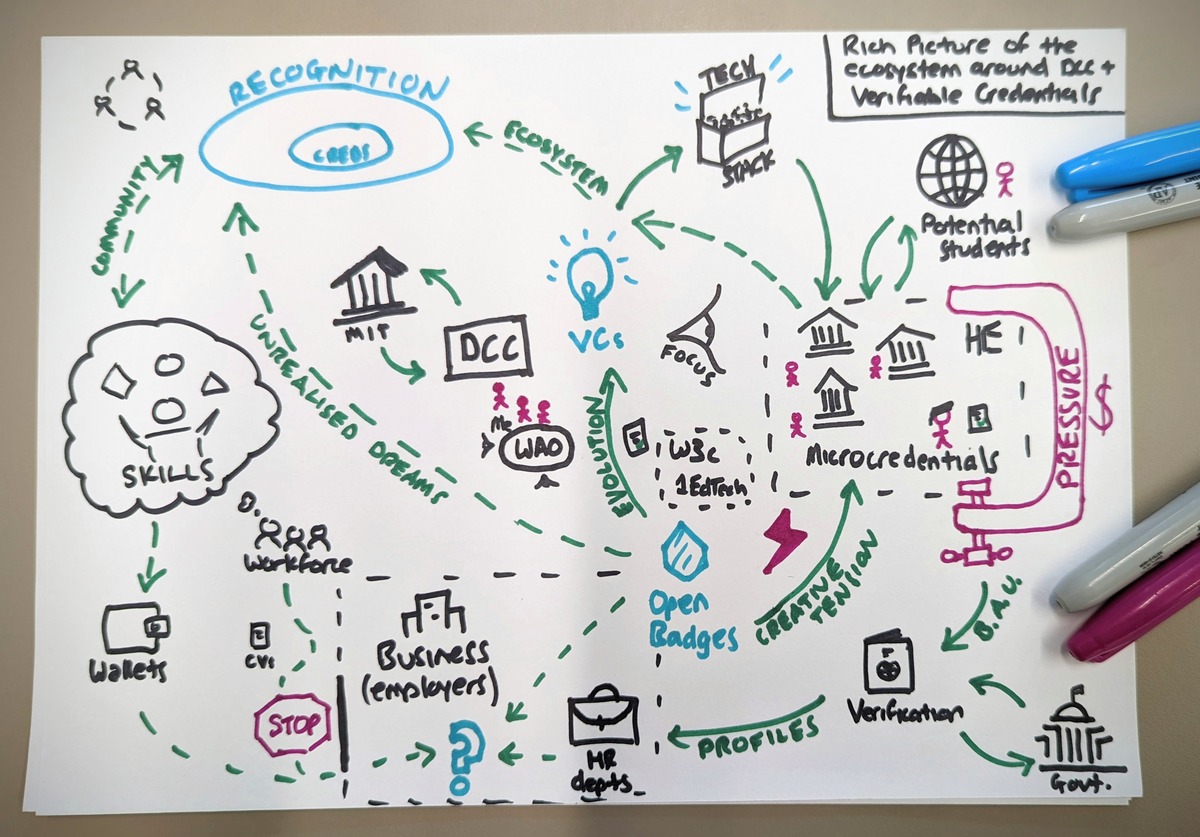TB872: Rich picture for my systemic inquiry (S2)
Note: this is a post reflecting on one of the modules of my MSc in Systems Thinking in Practice. You can see all of the related posts in this category.
Note: I realised after going to post this in the student forums that I had done this incorrectly. While it’s still a valuable activity, I was supposed to reflect on systemic inquiry S1 which is situated in my module study and development of my systems thinking practice. S2, meanwhile (which is what’s shown below) is a named situation of concern. Whoops.
You can read my follow-up post where I focus on S1 here.

I much prefer creating diagrams digitally, as it’s much easier to undo and move things around. However, for this exercise, which involved creating a rich picture, there was no other way. It’s not meant to be a work of art, thankfully.
Part of the soft systems methodology, rich pictures provide a mechanism for learning about complex or ill-defined problems by drawing detailed (“rich”) representations of them. Typically, rich pictures follow no commonly agreed syntax, usually consist of symbols, cartoons, sketches or doodles and can contain as much (pictorial) information as is deemed necessary. The finished picture may be of value to other stakeholders of the problem being described since it is likely to capture many different facets of the situation, but the real value of this technique is the way it forces the creator to think more deeply about the problem and understand it well enough to express it pictorially (a process known as action learning).
Wikipedia
This rich picture shows the systemic inquiry I’m focusing on as part of the TB872 module. I’ve already outlined the meta-narrative for this and the change I’d like to see in my chosen situation of concern. What I’m trying to do here is to put it all together. I could get a lot more detailed here, and could zoom in on any given part of this picture and create another rich picture just for that section.
In case it’s unclear, I’m next to the WAO bubble in the middle, doing work with the DCC. They are situated within MIT, and have created technology to help facilitate adoption of the Verifiable Credentials standard. This standard has an independent history to that of Open Badges, but for the purpose of this diagram, given that they align, I’m showing it as an ‘evolution’.
One of the things I want to get across with this picture is that I see microcredentials as essentially a ‘fork’ of the original vision for Open Badges. The way that microcredentials are discussed within Higher Education (HE) as predicated upon courses shows the financial and social pressure the sector is under.
Another thing I want to highlight is that credentials are part of a wider notion of ‘recognition’. Universities and other formal educational establishments are not the sole arbiters of recognition. Indeed, community-based validation through peer assessment and acknowledgement is potentially an even more valuable way for employers to hire the right people into their workforce.
Finally, I want to point out the role of ‘wallets’ here. If I was doing this digitally, I would have re-jigged the diagram so that the wallet icon to the bottom-left stands in relation to more of the different aspects of the picture. For example, governments are interested in wallets for the purposes of proof of identity. HE institutions are interested in wallets to reduce costs, prevent fraud, and streamline their systems. Learners and (potential) employees are interested in wallets to be able to present who they are in a more holistic way.
Like I say, I could spend a lot more time on this, and perhaps using sharpies on an A4 piece of paper wasn’t the best way to go. But there we go. I move on, as perfect is the enemy of done.

